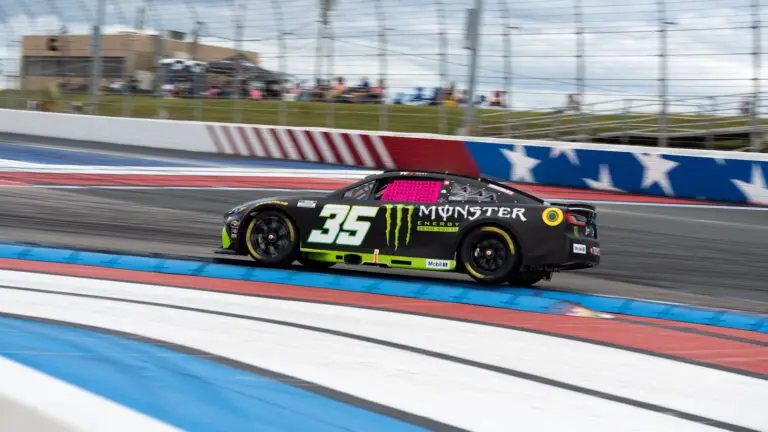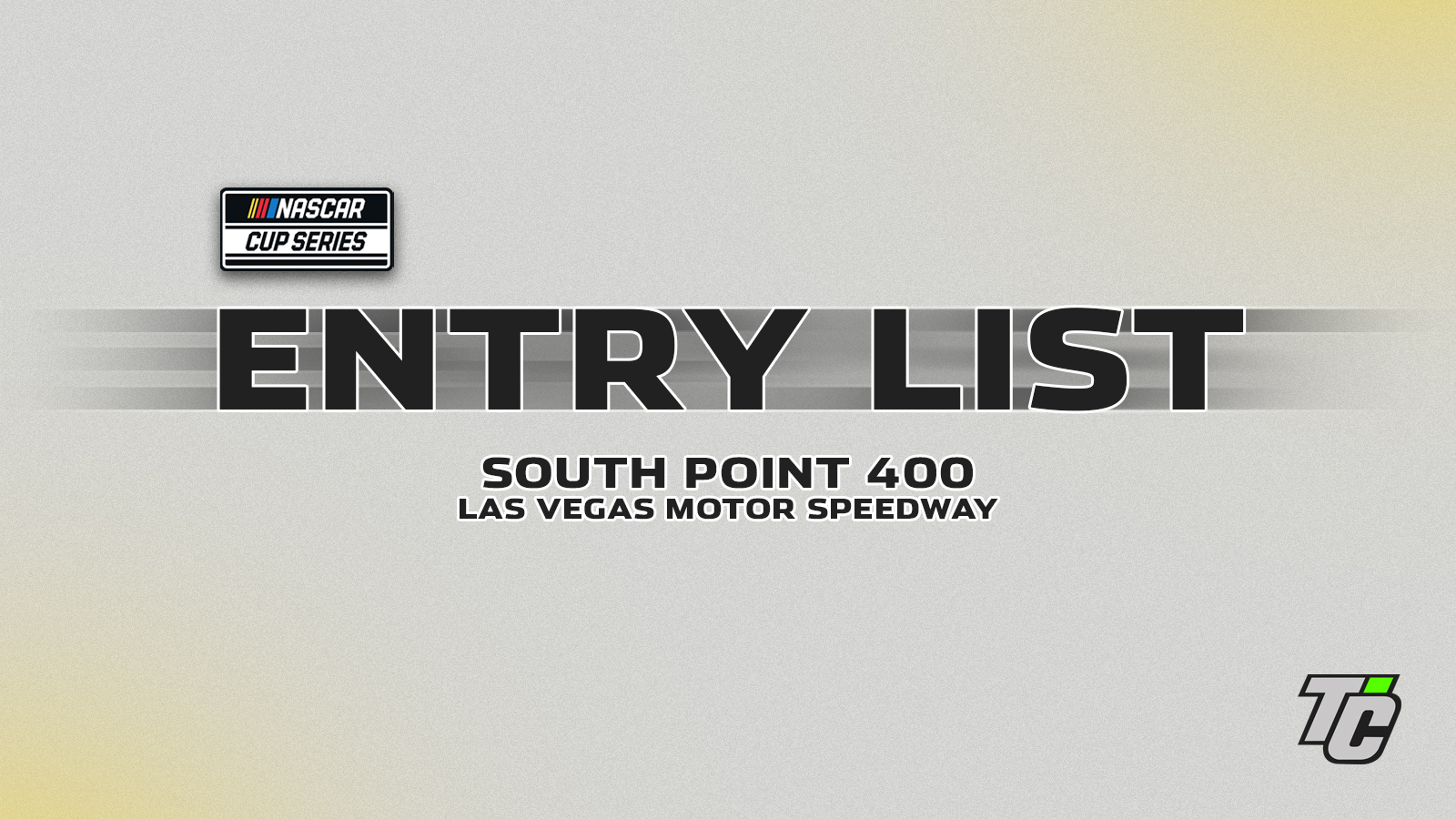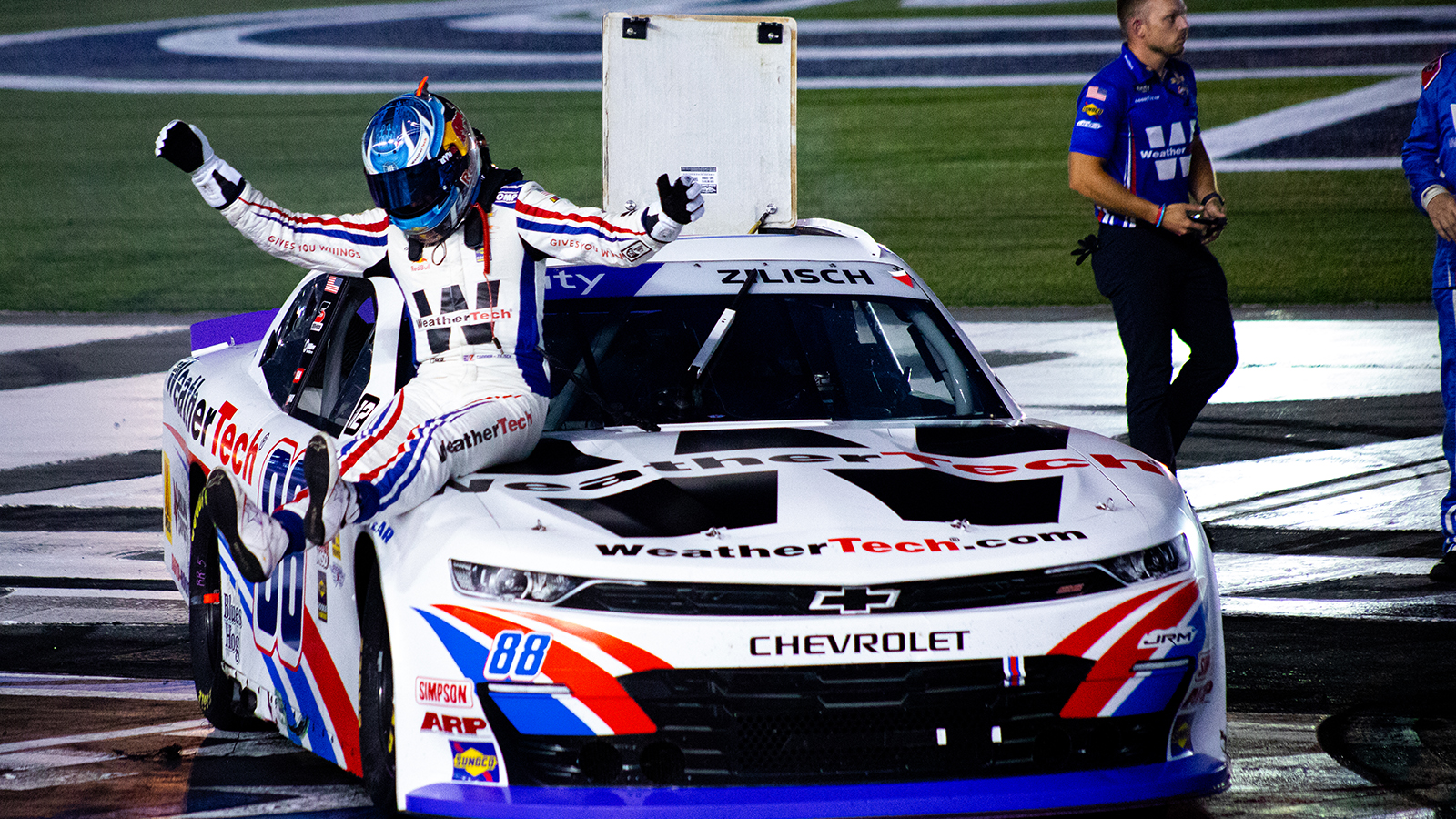
While NASCAR’s current schedule is off for the upcoming Easter holiday, the sanctioning body is keeping a sharp eye on the future with a set of pivotal tests this week performed at Martinsville Speedway.
The tests ran over three days, including the on-track debut of the manufacturer-spec Next Gen cars, as well as NASCAR testing the possibility of utilizing a rain tire compound on short tracks.
The Future Is Close With Next Gen
For the first time on Tuesday, Chevrolet, Ford, and Toyota brought their manufacturer-spec Next Gen models to Martinsville to begin testing their real-world usage for the upcoming 2022 debut.
Each model was fitted with wheel-force transducers to begin collecting data. The test brought one current driver in Alex Bowman for Chevrolet, NASCAR RaceHub analyst David Ragan for Ford, and Martin Truex Jr.’s spotter Drew Herring tested the Toyota-spec.
The manufacturers played a major part in the test, not only with bringing their cars but taking a leadership role in the event.
“That was the first test that was not NASCAR-led. That was led by the OEMs so it’s sort of the transition, if you will, of the car, continuing out of the development phase and now into the implementation phase with the teams,” NASCAR’s Senior Vice President of Racing Innovation John Probst said. “The OEMs are the last step in the process, and as far as them prepping the cars, the feedback was pretty positive. Obviously, there’s little things that we’re working on and we’ll continue to work on, but none of the cars missed any track time due to mechanical problems or anything. Some of the best feedback that we get is, ‘it’s a race car.’ ”
Due to the session being deemed “closed”, no photos were published publicly of the test. According to a release from NASCAR, the cars were adorned with “busy, pattern wrapped designs” as expected, to prevent the final appearance of each car to be seen. This is not an uncommon tactic as Chevrolet did the exact same thing in 2012 when testing the Chevrolet SS body. Many auto manufacturers perform the exact same practice when testing production variants of vehicles on public roads for data gathering leading up to the official reveal/release of a vehicle.
“With all of the branding now that the OEMs have put on those cars, we’re very happy with how that first test went,” said Probst. “Obviously the cars are heavily camouflaged right now, so it’s hard to see all of the detail that’s gone into it, but I think when the fans get the opportunity to see all of the production characteristics that have gone into these race cars, they’re going to be really happy with the end result.”
Probst went on to call the first test with the OEMs a “massive success” from NASCAR’s perspective. While there are still tweaks to be made, the car’s future seems promising for the heavily anticipated 2022 debut.
The cover is expected to come off of camouflaged cars in late spring, however, NASCAR did not provide an official date. The sanctioning body remains confident that the car’s progress remains on track despite the hurdles of the COVID-19 pandemic.
“I think it’s 100 percent still on schedule. We feel really comfortable with how the car’s performing and we continue to learn, but I would say now it’s smaller tweaks,” said Steve O’Donnell, NASCAR executive vice president and chief racing development officer. “The focus for the remainder of the year is getting more and more cars on track, more and more drivers out there getting a feel for how the car performs — not only on their own, but with some other cars out there on the track. That’ll be the focus as we continue throughout the year, and then parts and pieces will start to be distributed and we’ll be ready to roll for Daytona.”
Rain Tires On Short Tracks? It’s In The Cards
Adding into the already busy week of testing for the sport, NASCAR confirmed on Wednesday that testing was scheduled for the following day for utilizing rain tires on short tracks, and potentially one-mile venues.
Hendrick Motorsports’ Kyle Larson and Roush Fenway’s Chris Buescher were on hand for the test on Thursday. NASCAR’s overall goal is to make the rain more tolerable when it comes to inclement weather threatening a race day.
After the cars were on track for a shakedown, a water truck doused the track to begin testing multiple treads. The crews swapped between dry weather slicks, road course rain tires, and multiple types of “track-specific compounds” to divert water out of the tire grooves.
NASCAR’s Senior Vice President of Racing Innovation John Probst offered the media and fans insight on the testing process.
“We had some Sonoma compounds and then actually some Martinsville compounds that were carved to the tread profile that we’d anticipate the 18-inch tire (for the Next Gen car) would be molded to,” Probst said. “So we tested different compounds and different tread layout. Like I’ve said, we still have a lot of data to go through, but the one thing that’s pretty clear is, either of the treads versus a slick seems to dry the track much quicker.”
Probst called Thursday a “positive test” when it came to the results. While not a full-fledged yes or no, the results seem promising.
Buescher and Larson offered driver feedback for the ability on driving those sets of tires in wet conditions. The input from the teams and drivers is helping to dictate the next step.
“I don’t really have much wet-weather experience, so it was kind of cool to figure that out,” Larson said. “Honestly didn’t drive way different. You could still slow down good, turn good. Drive-off was easy to spin your tires, but other than that, it was kind of fun to chase the grip throughout the portions where it would start drying. So it was pretty fun and yeah, I think they’ve got a pretty good product that we could honestly start racing with right away if we needed to on these short tracks.”
Was @KyleLarsonRacin and @DanielsCliff ?? pic.twitter.com/VKp3hmKnrW
— Chad Knaus (@chadknaus) April 1, 2021
Rain tires are nothing new to NASCAR’s top three touring series, but their use has been incredibly sparse. After debuting in 2008 at an Xfinity Series race in Montreal, the compound didn’t meet the Cup Series level until 2020 at the Charlotte Roval Weekend in October. Both Cup and Xfinity utilized the tire, with the latter seeing heavier downpours and formations of puddles.
There is no official indication that NASCAR would implement the new compound(s) this season, as Goodyear would need to produce the selected compound at a more rapid pace to provide for each team. Additionally, rulings for the tires are also to be determined, whether NASCAR chooses to mandate the usage in certain conditions or to make them optional based on a team’s plans.
“It’s certainly ambitious,” Probst said. “… I’m not going to say it’s impossible, but there’s a lot of data we need to go through. We need to not only look at can it be done, but what tracks lie ahead, and there’s a whole lot of different variables that get brought into the mix, including the weather. … I wouldn’t say no, but I certainly wouldn’t sign us up for it either — just yet.”














